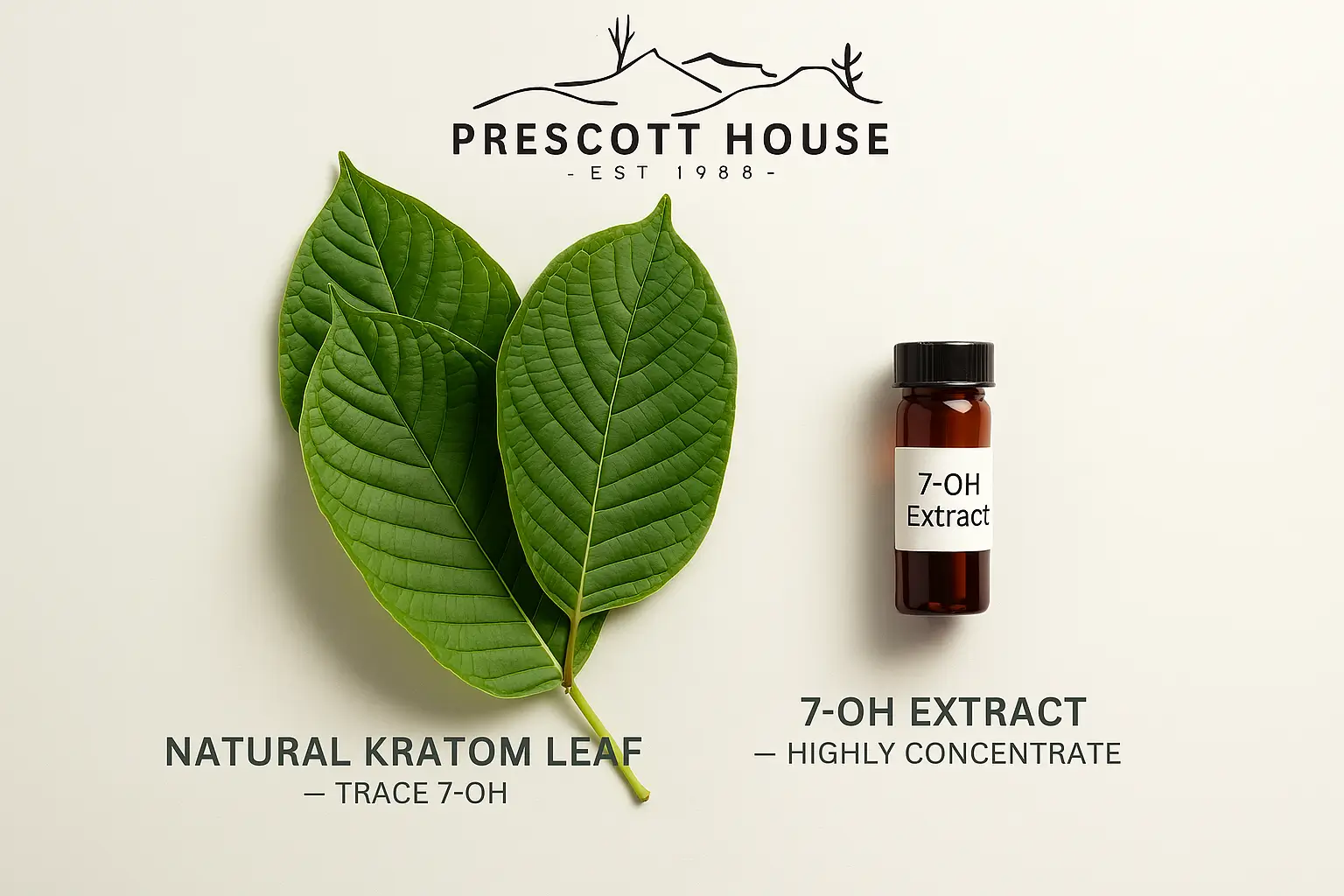We've all seen it: the uninhibited, euphoric frenzy of a cat on catnip. It's pure kitty bliss. Your dignified feline transforms into a rolling, drooling, hyperactive ball of fur that seems to be experiencing the time of their life. This spectacle leads many curious humans to wonder, "If it does that to my cat, what would it do to me?" Can people get high on catnip? The internet is full of myths and anecdotal tales, but the scientific answer might surprise you.
In this post, we're diving deep into the chemistry of catnip, separating fact from fiction, and exploring what really happens when humans smoke, drink, or ingest this famous feline herb. As professionals who work with individuals exploring various substances and their effects, we've encountered our fair share of creative experimentation—and catnip questions definitely make the list.
What is Catnip and Why Do Cats Love It?

Catnip, scientifically known asNepeta cataria, is a humble member of the mint family that grows wild across Europe, Asia, and North America. This unassuming herb looks quite ordinary—featuring heart-shaped leaves and small white or purple flowers—yet it holds extraordinary power over our feline friends.
The secret lies in a chemical compound called nepetalactone. This volatile oil makes up about 70-99% of the plant's essential oil content and acts as the primary driver behind those famous cat reactions. When cats smell nepetalactone, it binds to receptors in their nasal passages and triggers a cascade of neurological responses.
Here's what happens in your cat's brain: nepetalactone mimics natural cat pheromones, essentially tricking their neural pathways into thinking they've encountered something incredibly significant. The compound stimulates the olfactory bulb, which connects to areas of the brain responsible for emotional responses and behavior. This creates the rolling, rubbing, drooling, and hyperactivity we associate with a cat "high."
Interestingly, not all cats respond to catnip—sensitivity is actually inherited, and about 30% of cats lack the genetic makeup to experience its effects. Kittens under six months old typically don't respond either, as their neural receptors haven't fully developed.
The Million-Dollar Question: Can People Get High on Catnip?
The short answer is no. Humans cannot get high on catnip in the way cats do. This disappointing news stems from a fundamental difference in biology—we simply don't have the same neuroreceptors that cats possess.
The nepetalactone that sends your cat into ecstasy doesn't produce psychoactive or euphoric effects in human brains. Our neural pathways process this compound entirely differently, making that feline-style high impossible for people to achieve. Think of it like trying to unlock a door with the wrong key—the chemical just doesn't fit our biological locks.
This hasn't stopped people from trying, of course. Online forums and social media are filled with reports of people smoking catnip hoping for a marijuana-like experience. These attempts typically result in disappointment, headaches, and the realization that evolution designed this particular natural high exclusively for our four-legged friends.
However, the lack of psychoactive effects doesn't mean catnip is completely useless for humans. This herb has actually maintained a place in traditional medicine for centuries, long before we understood why cats go crazy for it.
What Does Catnip Actually Do to Humans? The Real Effects
While catnip won't give you the euphoric high you might expect, it does produce subtle but documented effects in human physiology. Understanding what actually happens when humans consume catnip helps explain why this herb has maintained relevance in folk medicine across cultures for generations.
When consumed as a tea or smoked in small amounts, most people report feeling relaxed and slightly drowsy. This sedative effect is mild but genuine—catnip contains compounds that can help calm the nervous system, similar to other members of the mint family like lemon balm or chamomile. Some individuals describe a feeling of mental clarity or gentle mood elevation, though these effects are subtle and shouldn't be confused with genuine psychoactive experiences.
The most consistent human response to catnip involves its potential as a sleep aid. Historical records show that European settlers commonly brewed catnip tea as a natural remedy for insomnia and restlessness. Modern users often report improved sleep quality when drinking catnip tea before bedtime, though the effect is gentle rather than sedating.
At Prescott House, we've encountered individuals who've experimented with various legal herbs and plants seeking natural alternatives to prescription medications. While catnip occasionally comes up in these conversations, most people find its effects too mild to serve as an effective substitute for anxiety or sleep medications.
Traditional and Modern Uses
Historically, catnip served multiple purposes in human medicine. Native American tribes used it to treat colic in babies, while European herbalists prescribed it for digestive issues, menstrual cramps, and nervous tension. These traditional applications suggest that our ancestors recognized catnip's gentle therapeutic properties, even without understanding the underlying chemistry.
Modern herbalists sometimes recommend catnip for its antispasmodic properties, meaning it may help relax muscle tension and reduce cramping. Some people use it as a mild digestive aid, brewing weak tea to settle upset stomachs or reduce bloating after meals. However, these applications require realistic expectations—catnip's effects remain subtle and work best as part of a broader wellness approach rather than as a standalone solution.
The Smoking Catnip Trend: What You Need to Know
Social media has sparked renewed interest in smoking catnip, with videos and posts claiming various effects ranging from relaxation to mild euphoria. This trend deserves careful examination, particularly regarding safety and realistic expectations.
When smoked, catnip produces a very mild calming sensation that some compare to smoking lavender or other herbal blends. The experience is generally described as subtle relaxation with possible light-headedness—effects that likely result from the act of deep breathing and brief oxygen reduction rather than the catnip itself. Many users report that smoking catnip tastes pleasant, with earthy, minty notes, but emphasize that any effects are barely perceptible.
However, smoking catnip comes with the same risks as smoking any plant material. Inhaling burned organic matter introduces tar and other potentially harmful compounds into your lungs. While catnip itself isn't toxic to humans, the combustion process creates byproducts that can irritate respiratory tissues and potentially contribute to long-term lung health issues.

Safety Considerations and Precautions
Most healthy adults can safely consume catnip in moderate amounts, but several important considerations apply. Pregnant women should avoid catnip entirely, as it may stimulate uterine contractions and potentially contribute to miscarriage risk. People with pelvic inflammatory disease or heavy menstrual bleeding should also exercise caution, as catnip may exacerbate these conditions.
If you're taking medications, particularly sedatives or blood thinners, consult with a healthcare provider before experimenting with catnip. While interactions are uncommon, combining catnip's mild sedative effects with prescription medications could potentially enhance drowsiness or affect blood clotting.
Large quantities of catnip can cause digestive upset, including nausea, vomiting, and diarrhea. Start with very small amounts—perhaps a quarter teaspoon of dried catnip in hot water for tea—to gauge your individual response. Some people experience headaches or dizziness when consuming too much catnip, particularly when smoking it.
Quality matters significantly when experimenting with any herb. Source your catnip from reputable suppliers who can verify it's free from pesticides, mold, and other contaminants. Avoid catnip products specifically marketed for cats, as these may contain additives or preservatives not intended for human consumption. Organic, food-grade catnip provides the safest option for human experimentation.
Conclusion
While the fantasy of sharing a euphoric experience with your feline friend is intriguing, the science is clear: people cannot get high on catnip. The chemical that sends cats into a frenzy, nepetalactone, simply doesn't work the same way in the human brain. We lack the specific neuroreceptors that make catnip so irresistible to our four-legged companions, meaning that viral "catnip high" you might see on social media is more likely placebo effect than genuine euphoria.
What catnip does offer humans is far more subtle but potentially valuable—mild sedative properties that have been recognized in traditional medicine for centuries. Whether consumed as a gentle bedtime tea or used as a natural digestive aid, catnip can play a small supporting role in wellness routines for those seeking gentle, natural remedies. However, it's crucial to maintain realistic expectations and prioritize safety, especially when it comes to smoking any plant material.
At Prescott House, we understand that curiosity about natural substances often stems from a deeper desire to find healthy ways to manage stress, anxiety, or sleep difficulties. If you're experimenting with herbs like catnip because you're looking for alternatives to help with these challenges, you're not alone. Many people explore various options when traditional treatments feel insufficient or when they're seeking more holistic approaches to their wellbeing.
The key is approaching these explorations safely and with proper support. If you find yourself frequently seeking out substances—whether natural or otherwise—to cope with life's pressures, it might be worth exploring more comprehensive wellness strategies. Professional counseling, stress management techniques, and evidence-based treatments can provide more reliable and lasting relief than any herb or substance.
Remember, there's no shame in seeking help when natural remedies aren't enough. Whether you're dealing with anxiety, sleep issues, or finding yourself drawn to experiment with various substances more frequently than feels comfortable, support is available. Your curiosity about catnip might be harmless, but if it's part of a pattern of seeking chemical solutions to emotional challenges, consider reaching out to a healthcare provider or mental health professional who can help you develop healthier, more effective coping strategies.
Your cat's blissful catnip experience will have to remain uniquely theirs—but your path to genuine peace and wellness can be uniquely yours too, with the right support and resources.
References
Note: This article is based on established scientific knowledge about catnip and its effects. The information provided is for educational purposes only and should not replace professional medical advice. If you have concerns about substance use or mental health, please consult with a qualified healthcare professional.
- Catnip Tea: Are There Health Benefits?
- Drugs.com - Catnip
- Behavioral effects of acute and long-term administration of catnip (Nepeta cataria) in mice













